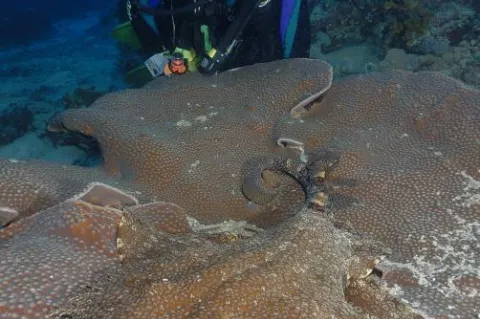Whales pass on knowledge
A team of researchers, led by the University of St Andrews, has discovered that a new feeding technique has quickly spread to 40 per cent of a humpback whale population. Humpbacks around the world herd shoals of prey by blowing bubbles underwater to produce 'bubble nets'.
The feeding innovation, called 'lobtail feeding', involves hitting the water with the tail before diving to produce the bubble nets. Lobtail feeding was first observed in 1980, after the stocks of herring, previously the main food for the whales, became depleted.
- Read more about Whales pass on knowledge
- Log in to post comments














